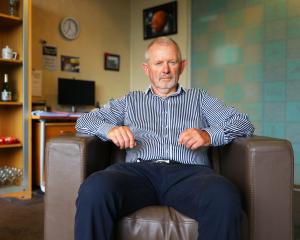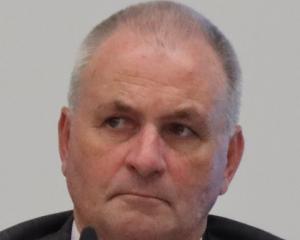Contact Energy has made a date with Lake Hawea residents to explain how lake levels are being affected by changes in electricity supply and demand.
Lake Hawea residents are concerned the lake is at a lower level than normal going into the winter.
Contact has traditionally used the lake to store water over the spring and summer to "draw down'' in winter and generate electricity at its Clyde and Roxburgh hydro-electric power stations during peak demand.
However, that is changing, partly as a result of new commercial factors and environmental policies well beyond Lake Hawea.
Contact Energy general manager of the Clyde power station Boyd Brinsdon told the Otago Daily Times yesterday the changing pattern of use of Lake Hawea for hydro storage was not a deliberate strategy. It had "evolved'' over the past five or six years "as geothermal plants have come on line and as we have seen an increase in summer load and a flattening of some of the winter peaks''.
Mr Brinsdon said the "biggest driver'' for what happened at Lake Hawea was the amount of rain and snow that fell in the headwaters.
But Contact Energy had "seen something that is starting to look like a pattern'' in relation to the use being made of the lake for electricity generation, and he and his staff would attend a public meeting in Lake Hawea on June 8 to explain it.
Guardians of Lake Hawea chairwoman Barbara Chinn said her group had sought an explanation, but an email from Contact Energy environmental adviser Daniel Druce had not provided sufficient clarity, and she expected a good turnout of residents at the meeting.
Mr Boyd said one of the changes within Contact Energy that was affecting the use of Lake Hawea was the company's building of a multimillion-dollar gas storage facility in Taranaki to supply a power station there during peak electricity demand.
That reduced the need to call on water from Lake Hawea in winter, as was the practice previously.
Upgrading the Cook Strait cable, allowing more electricity from the North Island to be sent south when necessary, was another factor reducing the company's reliance on Lake Hawea during the winter.
Contact Energy's new geothermal and wind plants also had an effect.
Mr Brinsdon said Contact Energy also subscribed to the government's target of New Zealand reaching 90% renewable energy by 2025, so if it could generate a megawatt using a renewable resource "that will always be our preference''.
The upshot was that with less reliance on Lake Hawea to provide for peak demand in winter, the water was being "drawn down'' earlier.
Mr Brinsdon said he wanted to have "a bit of a conversation'' with Lake Hawea residents about what impact lower lake levels were having.
"I would quite like to know if it is causing big problems being near the bottom of the operating range over winter.''
Mr Brinsdon said six years of dust monitoring had shown "almost no correlation between low lake levels and dust''.











